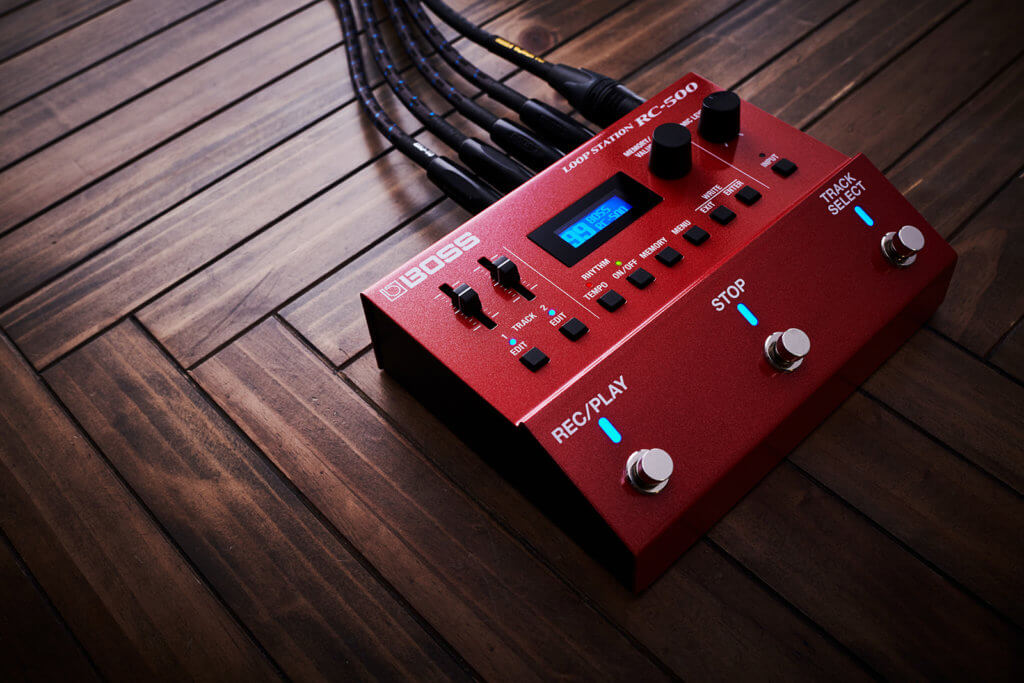It’s no surprise that looping pedals can be a way of providing personal accompaniment to performances, but in many cases, getting a small one-button device to get into layers can be confusing, and a larger unit may have all the bells and whistles. Boss found a way to cram a lot into a small footprint with their new RC500 Loop Station.
Boss figured out size is key, and the 3-button format found in their 500 series is pedalboard friendly, and still loaded. The top panel has sliders for the levels of the loops, a display of the function or loop being played, as well as the controls needed to navigate all of the settings. The 3-button configuration makes perfect sense out of the box, with a record/play, stop and track select footswitches. For added functionality, footswitches such as one of Boss’ FS pedals, or an expression pedal can be added. The rear panel sports stereo inputs and outputs, mini MIDI connections, as well as USB for connecting to a computer and using Boss’s Tone Studio application for loading and backing up files/loops. A big added bonus though is the XLR input for vocalists.
As we primed ourselves by working with Boss’ smaller looper, the RC-5, there are a lot of similarities between them. The display works in the same manner, offering up a visual guide to where you are in the measure of your loop, and recording. Users also get 13 hours of recording time, and 57 rhythm tracks, with an “A” and “B” variant for each. With 99 open slots of loops, each can have two tracks (with multiple overdubs), along with a rhythm track at the same time. All the while, the audio resolution is 32-bit. It’s a lot of features to unpack.
Boss RC-500 Loop Station Compact Phrase Recorder Pedal Review 
Now, Boss has also loaded in effects, with reverbs for the rhythm/drum tracks for added depth and ambience. For the loops, there are repeat modes that match the loop to the repeat, along with a shift function. The Scatter and Vinyl Flick modes take the other road, altering the loop to what can be described as destructionising quantizing, and bringing a DJ scratch approach to the loop, respectively.
Like any looper device, it takes a little bit of time perfecting timing for engaging or disengaging the record function, however with the three separate footswitches, maneuvering and knowing what mode we were in, as well as where we wanted to go, made more sense than smaller looping pedals. One excellent function is using it to load in pre-made loops from your computer using the app. Load up complete backing tracks to make that solo coffee shop gig more expansive than just an acoustic guitar. This could easily be an extremely useful device for a band that may have gone heavy on overdubs on their new EP and want those extra percussion and synth tracks to be present in live shows, while not having to play to a click.
With a dedicated XLR connection, vocalists can now loop live, or even pre-record their backing vocals for performances, and recall them when needed with a touch of a footswitch.
Overall, it does share a lot with its lil brother, the RC-5, and the larger size allowed for the extra foot switches and an easier-to-navigate control panel, so it streamlines the approach to looping in general, and just seemed easier to jump right into.
PROS:
Easy to use, built in drum patterns, looping effects, XLR input for vocalists
CONS:
None
STREET PRICE:
$349
